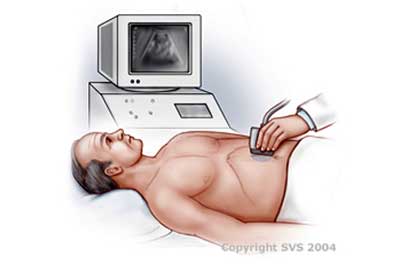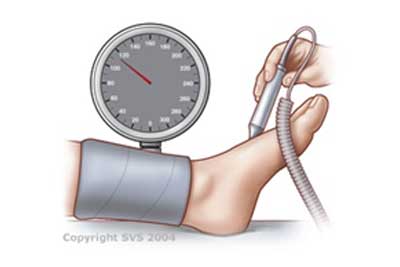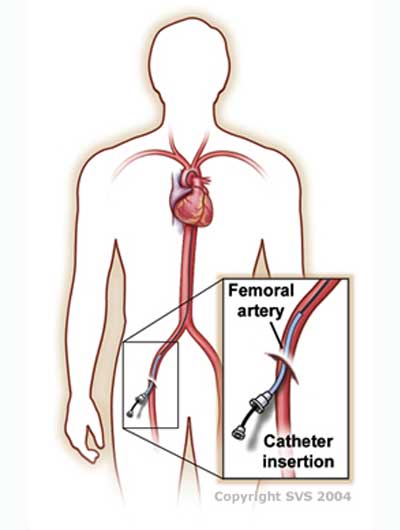TESTS
Duplex Ultrasound

BY DR. STEVEN A. LEERS
Duplex ultrasound is a non-invasive evaluation of blood flow through your arteries and veins . This test provides information to help your vascular surgeon make a sound diagnosis and outline a treatment plan. Accuracy is critical, so ultrasound testing should ALWAYS be performed by a credentialed sonographer in an accredited vascular laboratory.
Ankle-Brachial Index or ABI Test

BY DR. NEAL R. BARSHES
A non-invasive test that uses inflatable cuffs to gauge circulation (blood flow) and measure blood pressure in the arteries at various locations on the thigh, calf, foot and toes. Done in an outpatient clinic or vascular laboratory.
Minimal, brief discomfort, similar to what you feel while having a routine blood pressure test with an inflatable arm cuff.
Angiogram
An angiogram is an X-ray procedure that can be both diagnostic and therapeutic. It is considered the gold standard for evaluating blockages in the arterial system. An angiogram detects blockages using X-rays taken during the injection of a contrast agent (iodine dye). The procedure provides information that helps your vascular surgeon determine your best treatment options.
Angiograms are typically performed while you are sedated. The procedure may last 15-20 minutes or up to several hours, depending on how difficult the test is and how much treatment is given.

An angiogram is commonly performed under sedation with the use of local anesthesia.
The procedure usually starts with a needle put into the femoral (groin) artery. From one treatment site, areas all over the body can be treated.
After access is established, catheters (thin tubes) and wires are threaded through the arterial system to a specific area of interest or throughout the entire body.
As a contrast agent (iodine dye) is injected, X-ray images are taken to let your vascular surgeon view the flow of the dye and identify blockages. The surgeon can then choose the best mode of therapy for you - whether during or following the angiogram. This decision depends on your symptoms and the severity and characteristics of the blockages.
Two common therapies that can be provided during the angiogram are balloon angioplasty and stent placement.
Angioplasty can be used to open arterial blockages. Guided by X-ray, your vascular surgeon navigates through the blockage with a wire and introduces a special device equipped with an inflatable balloon. After positioning the balloon device across the blocked portion of the artery, the vascular surgeon inflates the balloon to expand the artery and compress the blockage. The balloon is then deflated and removed while keeping the wire in place across the area that has been treated. Next, contrast dye is injected to assess the result. Treatment is considered a success if blood flow is improved and less than 30% of the blockage remains. If the vessel is still considerably narrowed, placing a stent may be the next step.
Stents are used to prop open an artery at the site of a narrowing. Stents are generally placed after balloon angioplasty when there is residual narrowing or insufficient blood flow in a treated vessel. Stents are considered a permanent implant and cannot be used if you have a metal allergy. Stents that are used in the leg are constructed of a nickel-titanium alloy (Nitinol), a memory-shaped metal. This alloy has a predetermined size and shape at body temperature and expands to this size and shape after being introduced through a catheter. These stents resist kinking and are flexible so that damage from activities that involve your legs is minimized.
If surgery is felt to be a better option, your vascular surgeon will obtain any additional X-ray images needed to plan a surgical bypass of the blocked vessel/s and will then conclude the angiogram.